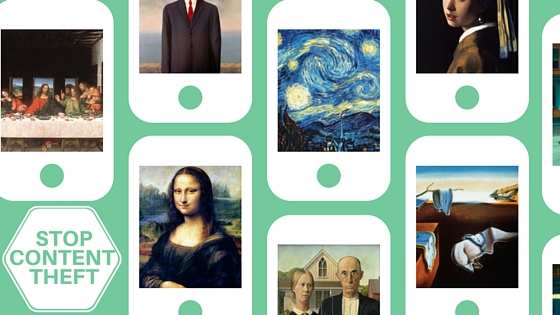
August 24, 2015: Last week, shortly after Instagram sensation/pseudoceleb @FatJewish had signed a contract with celebrity talent agency CAA, he was lambasted publicly as social media and online pubs exploded with accusations that @FatJewish, AKA Josh Ostrovsky, stole the content on his sites and gave no credit to original creators for their contributions. Comedians came out of the woodwork to claim that Ostrovsky ripped off their jokes, removing any attributing credit for them, and reaped the benefits from followers, sponsors, and brands. The contract with CAA was the straw that broke the camel’s back.
While Ostrovsky was indeed 100% wrong for using stolen content, it’s hard to blame him fully for the problem. Many marketing agencies and brands entered agreements with him and some must have been aware of the uncertain provenance of the content on his page. Instagram and Twitter also left his images alone without any consequences while his fan bases grew into the millions. Many of thes influencers that are on the web are young and untrained in the niceties of copyright, media, marketing, or business law, so it isn’t surprising that this eventually happened.
This is not meant to be a lecture, but we’re all a little at fault here. Copying and pasting content you didn’t create, without warning the actual creators plays into a cycle of greed that’s bad for everybody. Nonchalance on the part of the social networks tolerating content theft doesn’t make it right.
These concerns need to be part of a much bigger conversation, especially on the heels of the (still unresolved) “freebooting” drama besmirching Facebook’s much-touted video successes.
Social media, is in fact, about sharing…not stealing. Who is at fault for letting this happen?
- Curators and Influencers: It’s time to start RTing and sharing sources. If someone else made it, you can’t just take it. You should have learned that in Kindergarten.
- Users: Unfortunately, some of this responsibility lies with us. As social media has become an everyday swipe in our lives, we care less and less about what we consume and where it comes from. Many comics and celebrities have already spoken out about this scandal, naturally with hilarious jokes. You may not have known that this work was stolen, but once the noise has been made by creators, we need to support them and unfollow accounts like @FatJewish. I mean, read a few articles with his statements. The guy sounds like a nightmare.
- Marketers and Brands: This is about due diligence, even for thefts occurring on social media platforms that aren’t “on the radar” in the same way that broadcast media and mainstream publishing channels are. Whether it comes to working with an influencer (or becoming one yourself), do your research. Out of all the insanely creative and talented influencers that have come out of Vine, Instagram, Tumblr, etc. there are a handful of “internet celebrities” that say the wrong thing, can’t handle responsibility, or, like Ostrovsky, don’t have the actual talent they sell. Is risking the public image of your brand worth the impressions you’ll get from advertising with these people? Influencers can be priceless additions to a social media campaign, but be forewarned: their success doesn’t depend on you. Their attitude often seems to be that you need them more than they need you. Make sure you know what you’re getting yourself into.
- Social Networks: You are, to be frank, most to blame. It’s time to put stricter regulations, monitoring, and systems into place when it comes to prohibiting content theft. Unethical users are taking advantage of your lax attitude and making money off of it. That doesn’t sit well with users that are there to genuinely be part of a community. If Facebook can develop a face-recognizing algorithm, it can certainly develop a content-stealing algorithm. But this will only happen if enough people scream about it — and right now, the mood among content creators is definitely approaching scream territory.
- 10 Mistakes to Avoid When Using QR Codes for Marketing - September 20, 2023
- Kevin Lee on How AI Changes the SEO Landscape - August 31, 2023
- The Power of Compound Marketing: Kevin Lee Presents @ 1MediaWorld 2023 Global Conference - March 7, 2023
